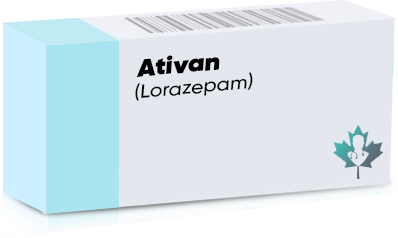
| Drug Name: | Soma (Carisoprodol) |
| Tablet Strength: | 500mg |
| Best Price: | From $2.50 |
| Where to buy?: | Canadian Drug Store |
Muscle pain and discomfort, whether arising from injuries, surgeries, or underlying conditions, can profoundly disrupt daily life. In such instances, Soma, scientifically known as Carisoprodol, emerges as a potent ally, targeting the central nervous system to alleviate spasms and pain. In this extensive guide, we embark on a detailed journey to unravel the complexities surrounding Soma, exploring its mechanism of action, diverse applications, dosage intricacies, potential side effects, and essential precautions.
Understanding the Mechanism of Action
At the core of Soma’s efficacy lies its intricate mechanism of action, a process that revolves around intercepting nerve impulses traversing between peripheral nerves and the brain. This unique attribute enables Soma to intricately modulate the central nervous system, thereby inducing muscle relaxation and providing precise relief from spasms and associated discomfort. Such a mechanism not only serves as the foundation for managing acute musculoskeletal conditions but also stands as a pivotal factor in enhancing the overall quality of life by effectively alleviating symptoms and fostering comfort and mobility.
Exploring Indications and Uses
Soma’s versatility transcends conventional boundaries, extending far beyond mere symptomatic relief. It demonstrates remarkable efficacy in addressing a diverse spectrum of conditions characterized by acute, short-term muscle pain, and spasms. Whether stemming from traumatic incidents, post-surgical procedures, or chronic musculoskeletal disorders, Soma emerges as a beacon of hope, offering profound respite from debilitating symptoms and restoring functionality. Moreover, its seamless integration into comprehensive treatment protocols, alongside physical therapy and adjunctive measures, underscores its indispensable role in fostering holistic healing and comprehensive rehabilitation. By delivering targeted relief and synergizing with other therapeutic modalities, Soma significantly enhances patient outcomes and paves the way for sustained wellness and improved quality of life.
Navigating Dosage Guidelines
Dosage guidelines play a pivotal role in maximizing therapeutic benefits and minimizing potential risks associated with Soma utilization. Tailored dosing, customized to suit individual patient requirements and tolerances, stands as a fundamental aspect of effective management. Beginning with a regimen of 250-350 mg administered three times daily and at bedtime, adherence to prescribed dosages fosters consistency in treatment effectiveness while reducing the chances of adverse reactions. This focus on personalized dosing highlights the significance of patient-centric care and customized therapeutic approaches.
Potential Side Effects and Interactions
While generally well-tolerated, Soma isn’t immune to side effects, with common occurrences encompassing headaches, dizziness, drowsiness, and nausea. Vigilant monitoring and proactive management of adverse reactions facilitate early intervention, promoting patient safety and well-being. Furthermore, heightened awareness of potential drug interactions, particularly with benzodiazepines, opioids, and antidepressants, underscores the importance of comprehensive medication review and interdisciplinary collaboration.
Medical Considerations
Before embarking on Soma therapy, it is essential to conduct a thorough assessment of the patient’s medical history. This evaluation should encompass various factors such as existing allergies, any history of liver or kidney disorders, and the patient’s pregnancy status. Such a comprehensive review serves as the foundation for informed treatment decisions and ensures the safety and efficacy of Soma usage. Special attention must be paid to vulnerable populations, including pregnant or breastfeeding women. For these individuals, a judicious risk-benefit assessment is crucial before initiating Soma therapy. Due to the potential risks associated with medication use during pregnancy or lactation, close medical supervision becomes imperative to monitor for any adverse effects on both the mother and the developing fetus or newborn. Moreover, proactive engagement with healthcare providers is paramount throughout the treatment journey. Open communication and collaboration between patients and their healthcare team facilitate informed decision-making, allowing for the tailoring of treatment plans to meet individual needs and circumstances. This partnership ensures that potential risks are mitigated, and optimal treatment outcomes are achieved.
The Risk of Abuse and Addiction
The inherent potential for abuse and addiction underscores the importance of adopting a cautious approach to Soma utilization. Emphasis on short-term therapy and vigilant monitoring for signs of dependence are paramount in mitigating the risk of substance misuse. Heightened awareness of withdrawal symptoms and proactive engagement with healthcare providers empower patients to navigate the complexities of addiction risk, fostering a safe and effective treatment paradigm.
Embracing a Holistic Approach
Beyond pharmacological intervention, embracing a holistic approach to pain management is instrumental in fostering comprehensive well-being and long-term recovery. Integration of Soma into a multifaceted treatment paradigm, encompassing physical therapy, lifestyle modifications, and adjunctive therapies, empowers patients to address the underlying drivers of musculoskeletal pain and enhance overall quality of life. By fostering a collaborative and interdisciplinary approach, patients can unlock the full potential of Soma while promoting sustainable healing and rehabilitation.
In essence, Soma (Carisoprodol) stands as a beacon of hope in the landscape of acute musculoskeletal pain and spasms. By harnessing its unique mechanism of action and adhering to personalized dosing regimens, patients can unlock its full potential while minimizing the risk of adverse effects and dependence. Vigilant monitoring, interdisciplinary collaboration, and a holistic treatment approach serve as pillars in optimizing therapeutic outcomes and empowering individuals on their journey to wellness.
